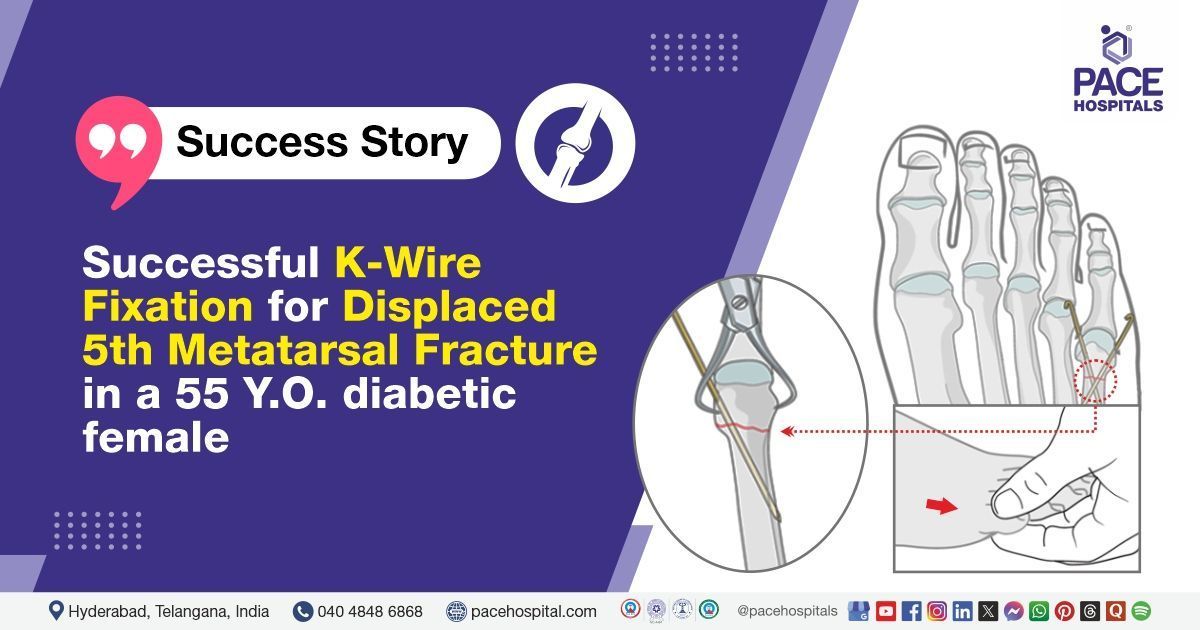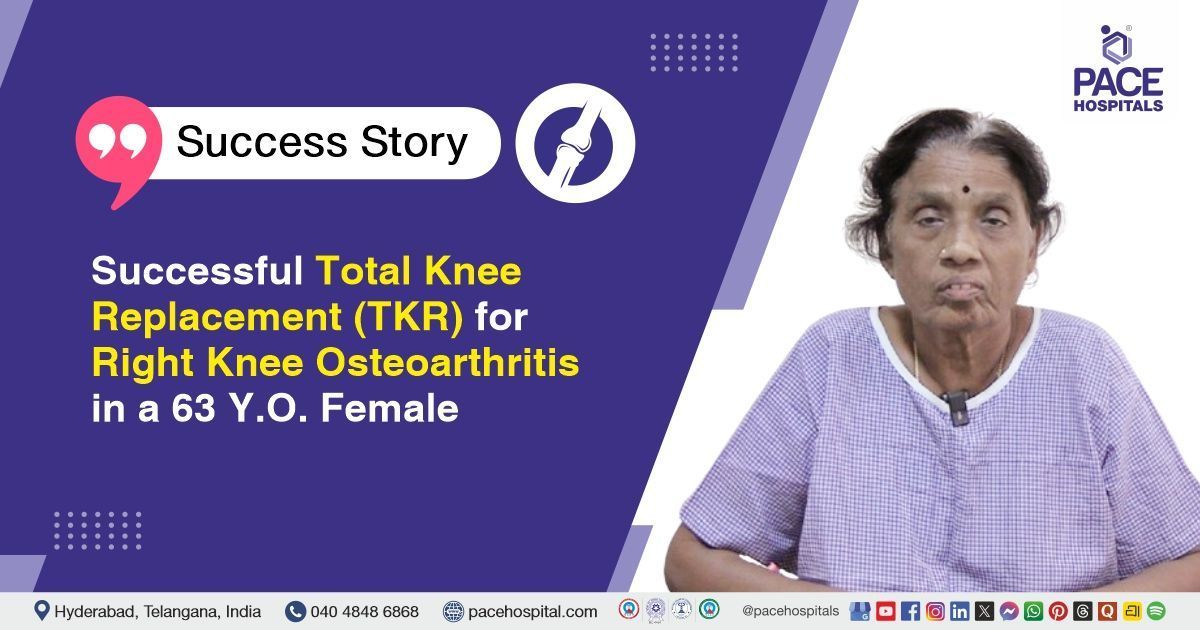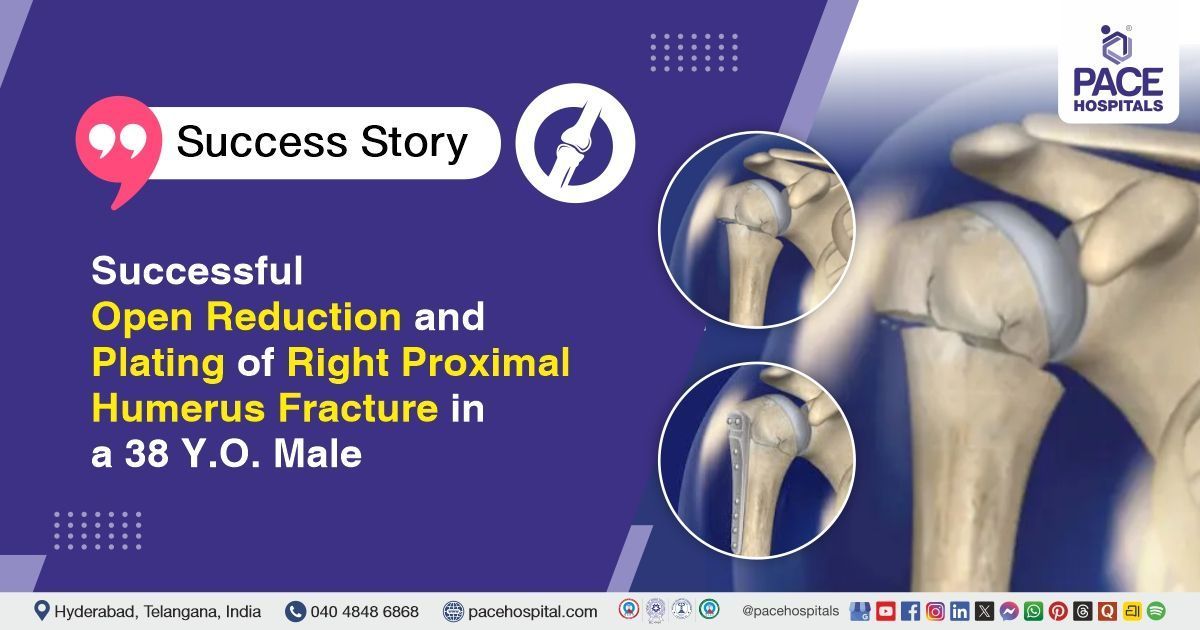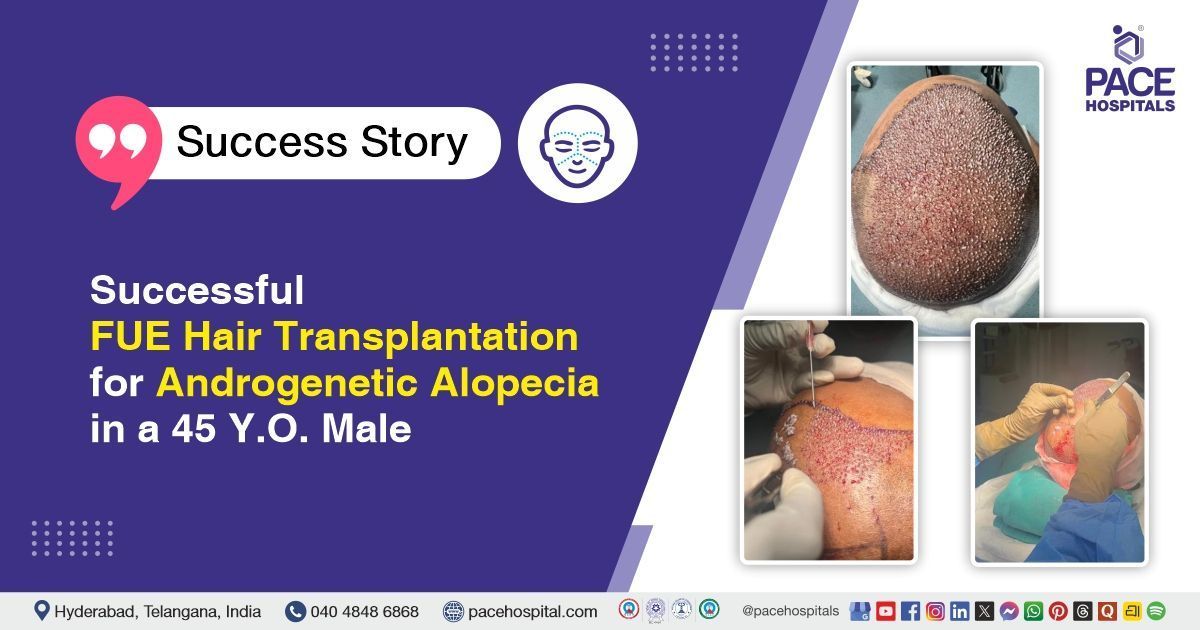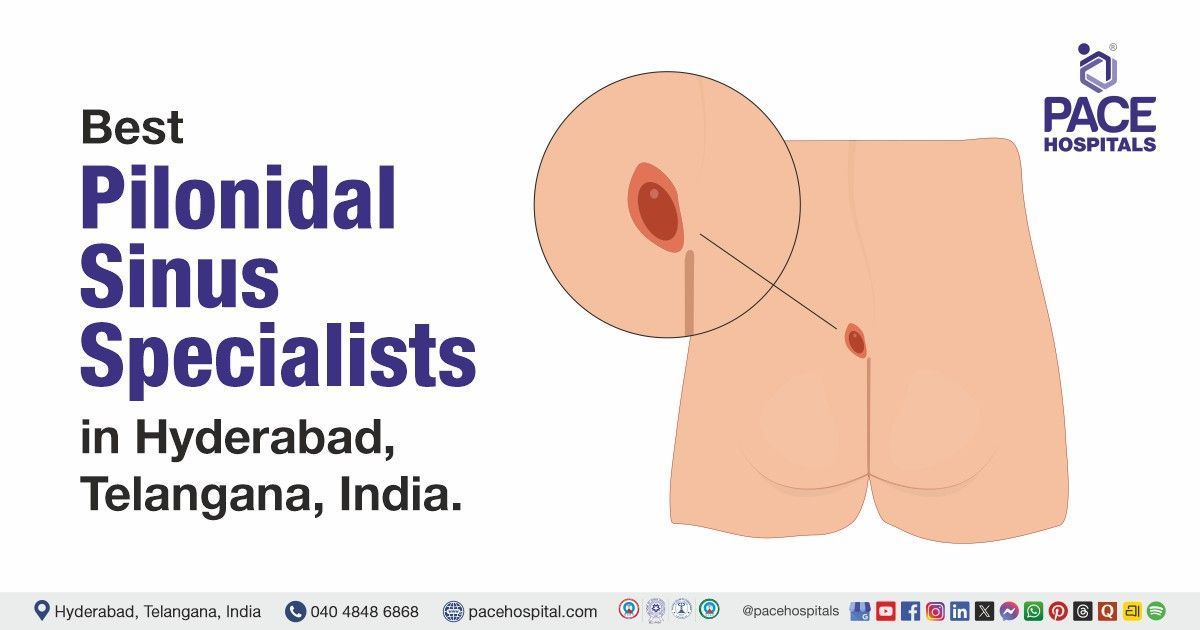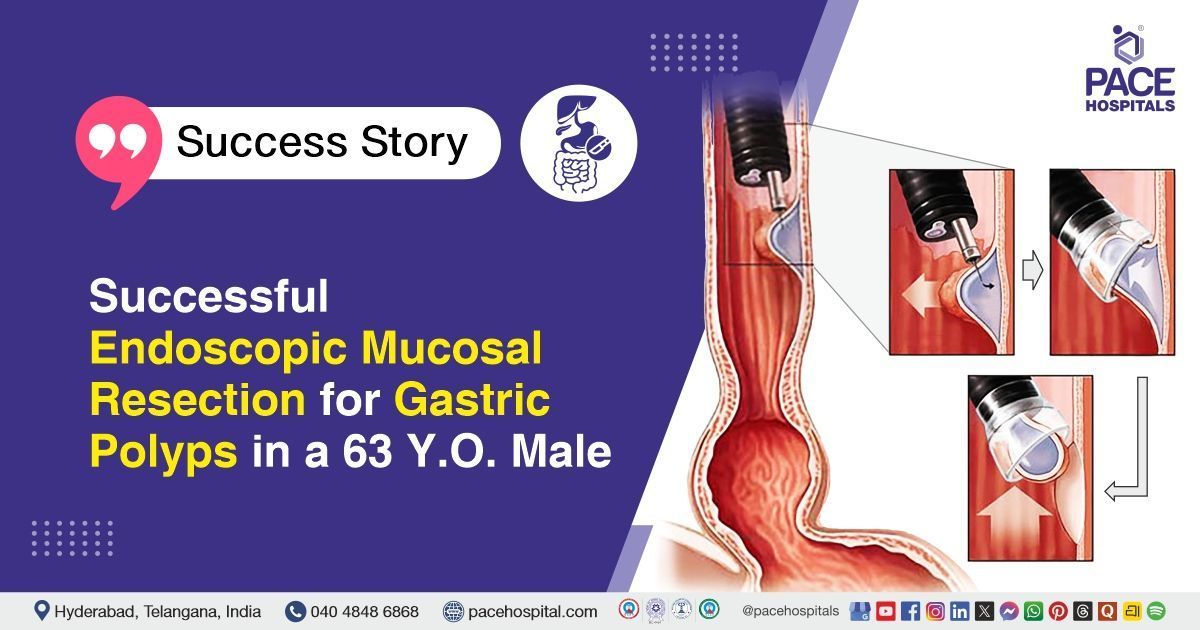Successful K-Wire Fixation for Displaced 5th Metatarsal Fracture in a 55 Y.O. Diabetic Female
PACE Hospitals
PACE Hospitals' expert Orthopedic team performed an internal fixation using K-wire under ankle block anesthesia on a 55-year-old female patient who had been experiencing persistent pain in her right foot following a twisting injury on the stairs. The procedure was aimed at relieving her pain, improving her mobility, and enhancing her functional recovery.
Chief Complaints
A 55-year-old female patient with a BMI of 24 presented to the Orthopaedic Department at PACE Hospitals, Hitech City, Hyderabad, with complaints of pain and swelling in her right foot following a twisting injury sustained while descending the stairs.
She reported difficulty in bearing weight on the affected foot, along with significantly restricted and painful movement in the right ankle and foot. These symptoms raised clinical suspicion of a possible fracture or associated soft tissue injury, warranting further diagnostic evaluation and orthopaedic intervention.
Medical History
The patient had a known history of
diabetes mellitus and was on regular medication to manage her condition. There was no history of
hypertension or any other significant comorbidities. Her diabetes was well-controlled, and there were no indications of complications that could impact her recovery from the current injury.
Menstrual and Obstetric History
The patient’s menstrual and obstetric history was reported to be normal, with no significant abnormalities or complications. She had no history of gynecological issues that would affect her overall health or recovery.
On Examination
Upon admission to PACE Hospitals, the patient's vital signs were found to be stable on examination. Swelling was noted over the 5th metatarsal region of the right foot, with tenderness along the lateral aspect. The range of motion (ROM) in the right ankle and foot was significantly restricted and painful, accompanied by palpable crepitus. A positive result was observed on the inversion stress test, suggesting possible instability, but no distal neurovascular deficits or other abnormalities were found.
Diagnosis
Following the examination, the Orthopaedic team conducted a comprehensive assessment, which included a thorough review of the patient’s medical history and a detailed clinical evaluation. Based on the presenting symptoms and physical findings, a provisional diagnosis of a fracture of the right 5th metatarsal shaft was established.
To confirm the diagnosis, imaging studies were undertaken. Plain radiographs (X-rays) of the right foot—anteroposterior (AP), lateral, and oblique views—demonstrated a fracture along the shaft of the 5th metatarsal bone. These radiographic findings supported the clinical suspicion and confirmed the presence of a right 5th Metatarsal Shaft Fracture.
Based on the confirmed diagnosis, she was advised to undergo Metatarsal Fracture Treatment in Hyderabad, India, under the care of the Orthopaedic Department, ensuring comprehensive management of the fracture.
Medical Decision Making (MDM)
Given the patient’s symptoms, functional limitations in daily activities, and the confirmed diagnosis of a right 5th Metatarsal shaft fracture, surgical intervention was deemed essential.
After a detailed discussion with the patient and her guardians, Dr. Anand V. Agroya, Consultant Orthopaedic Surgeon, recommended internal fixation using a K-wire as the most appropriate and effective treatment option to achieve optimal stabilization and facilitate recovery.
The patient and her family were thoroughly counselled about the nature of the injury, the surgical procedure, potential risks, and the need for internal fixation using K-wires to stabilize the displaced 5th metatarsal fracture.
Surgical Procedure
Following the decision, the patient was scheduled to undergo Internal fixation using K-wire Surgery in Hyderabad at PACE Hospitals, under the expert supervision of the Orthopaedic Department.
Before proceeding with the surgery, the medical team ensured the patient's medical stability and obtained informed consent to facilitate proper alignment and recovery. A comprehensive pre-operative evaluation was carried out, including a detailed pre-anaesthesia check-up to assess the patient’s fitness for the procedure.
After the pre-operative evaluation, the patient underwent internal fixation surgery. During the procedure, a precise incision was made over the fracture site, where a displaced long oblique fracture of the 5th metatarsal was identified. This was followed by careful realignment of the displaced bone fragments, and internal fixation was performed using K-wires to stabilize the fracture and promote proper bone healing. The surgery was completed successfully without intraoperative complications.
Postoperative Care
The postoperative period was uneventful, and the patient was closely monitored in the ICU to ensure a stable recovery and proper alignment of the fracture site. Intravenous antibiotics, analgesics, and other supportive treatments were administered, and the surgical wound remained healthy with no signs of infection.
The patient showed symptomatic improvement and was prepared for discharge with detailed post-discharge care instructions and follow-up recommendations.
Discharge notes
Upon discharge, she was in good condition, with detailed medical instructions for continued care and scheduled follow-up visits to ensure proper recovery and management of her condition.
Discharge Medications
Upon discharge, the patient was prescribed antibiotics to prevent infection, analgesics to manage postoperative pain, non-steroidal anti-inflammatory drugs (NSAIDS) to reduce inflammation and discomfort, and a proton pump inhibitor (PPI) to protect the gastric lining from potential irritation caused by the NSAIDS.
Advice on Discharge
The patient was given specific instructions to keep the dressing dry and to maintain proper wound hygiene to prevent any risk of infection. She was advised not to bear weight on the right foot until further notice, to allow for optimal healing and avoid compromising the surgical site. These precautions were emphasized to ensure a smooth recovery and prevent complications.
Emergency Care
The patient was informed to contact the Emergency ward at PACE Hospitals in case of any emergency or development of symptoms like fever, abdominal pain or vomiting.
Review and follow-up notes
The patient was advised to return for a follow-up visit with the Orthopaedic Department at PACE Hospitals after 5 days for a dressing change and further evaluation.
Conclusion
This case demonstrates the effectiveness of Internal fixation using K-wire in the treatment of metatarsal fractures, providing significant symptom relief, faster recovery, and a reduced risk of complications.
Significance of Internal Fixation in Metatarsal Fracture
Internal fixation, also known as Open Reduction and Internal Fixation (ORIF), is a widely recommended treatment for metatarsal fractures, particularly in cases involving displaced or unstable fractures. According to an orthopedic doctor / orthopedic surgeon, ORIF offers several advantages over conservative management techniques such as casting or bracing. It involves surgically realigning the fractured bone fragments and securing them with implants like K-wires, which provide direct and stable support.
In a metatarsal long oblique fracture, internal fixation was crucial to maintain proper alignment and prevent further displacement during the healing process. This approach not only promotes faster and more reliable bone healing but also reduces pain and inflammation caused by fracture movement. Additionally, the stability achieved through ORIF can allow for earlier mobilization and weight-bearing compared to conservative methods, which is especially important for restoring the patient's ability to resume daily activities. Moreover, by maintaining anatomical alignment, internal fixation may help reduce the long-term risk of post-traumatic arthritis.
Share on
Request an appointment
Fill in the appointment form or call us instantly to book a confirmed appointment with our super specialist at 04048486868

